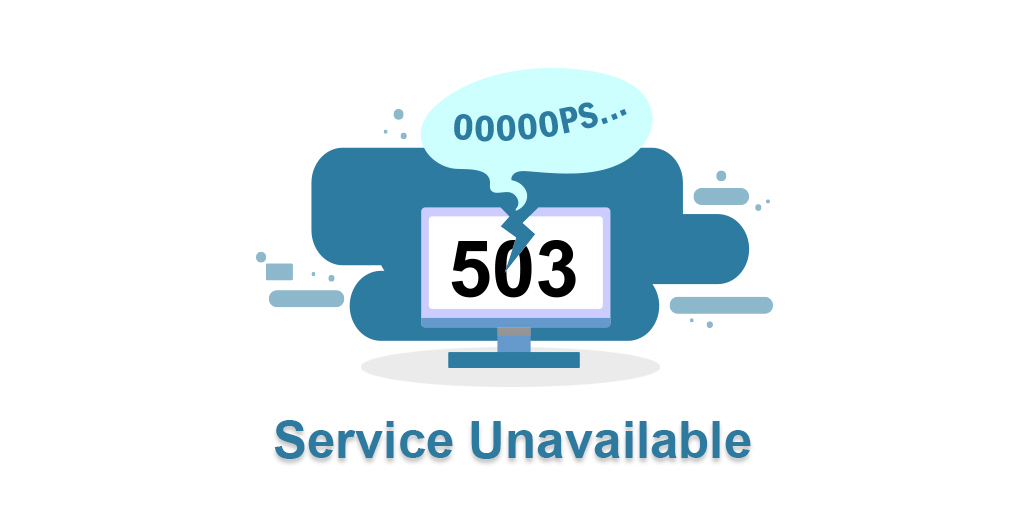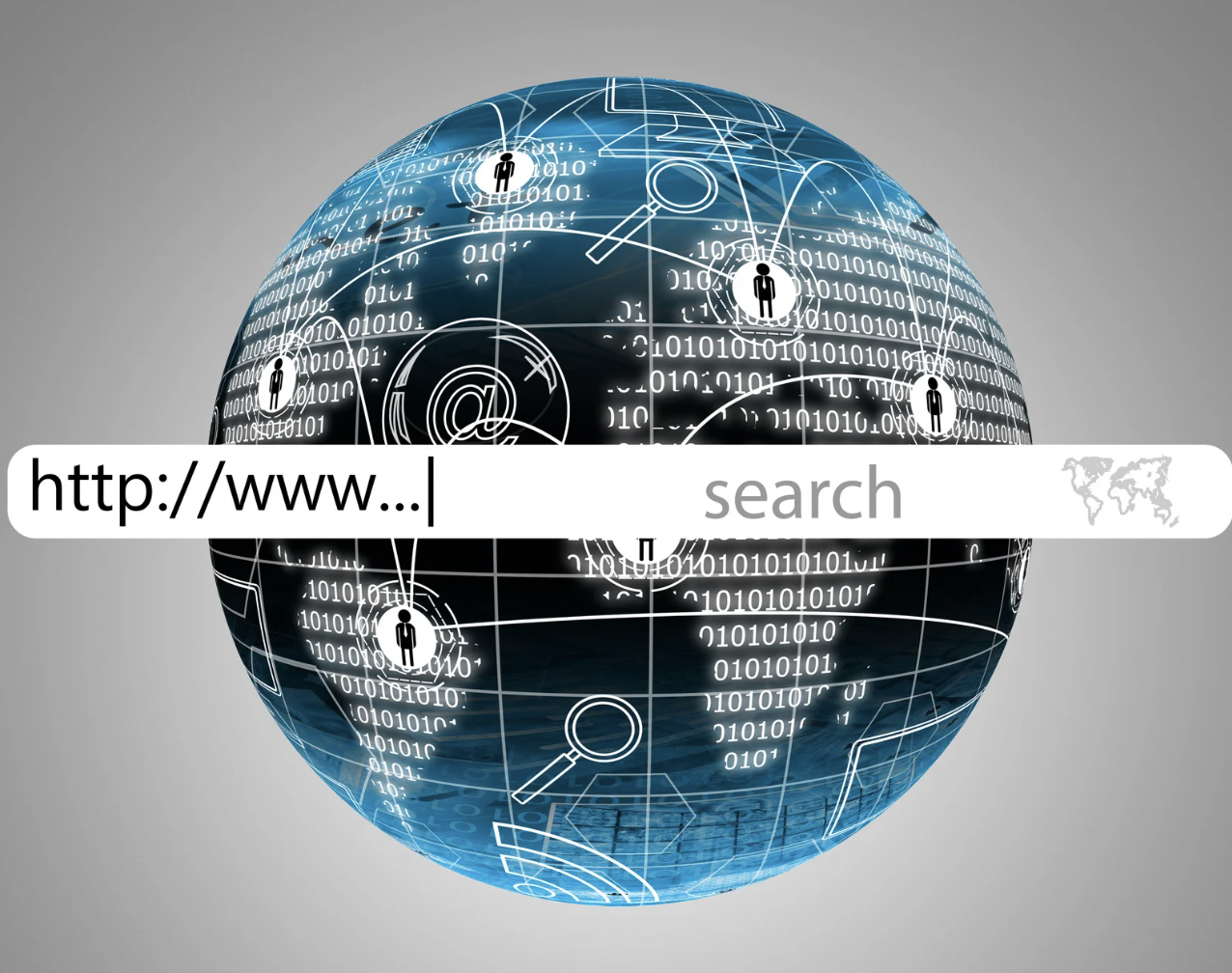Top-level domains (TLDs) are the last segment of a domain name, found after the final dot. They form a crucial part of the domain name system (DNS), which organises the internet. Popular TLDs include .com, .org, and .net – but many others exist, each serving a specific purpose. For instance, .edu is reserved for educational institutions, while .gov is designated for government entities. The right TLD can have a huge impact on your brand's credibility and user trust, making it a strategic decision for any business.
We’ve created this guide to help you make that decision. Keep reading to discover a top-level domains list, tips for choosing the best TLD for your business, and insights on how your choice can transform your branding and SEO.
How TLDs work and why they matter
Understanding what is a top-level domain is essential for business owners who want to create a lasting identity. When you enter a web address, the very first thing the browser does is identify the TLD – which helps route the request to the appropriate server. Think of TLDs as signposts on the internet, guiding users to the type of content they can expect.
A well-chosen TLD or domain extension contributes to your website's perception. Research indicates that, for many users, a .com domain is synonymous with credibility, professionalism, and stability. In a world where online scams are prevalent, this perception matters more than you might think.
Your TLD not only influences trust, but it also reflects your brand identity. For example, a tech startup might opt for .tech to signal its industry focus, while a non-profit may choose .org to convey its mission. Selecting a TLD that resonates with your audience enhances your brand message and sets you apart from your competitors.
Though TLDs don’t directly impact search engine rankings, they do play an indirect role in SEO too. A relevant and memorable TLD can attract more visitors, improving your organic traffic over time. For instance, if you run a local bakery in Australia, using a .au TLD can help you target a specific audience while boosting your site's visibility in local searches. This then results in higher engagement and more repeat visits since users are more likely to remember a concise, relevant web address.
It only takes a glance at the stats to grasp the growing diversity of TLDs. According to Verisign, there were over 354 million registered domain names globally in 2023 in Q1, highlighting the importance of TLDs in the vast digital landscape. The rise of niche TLDs like .store and .design indicates a trend towards specialisation as well, enabling brands to connect more deeply with their audiences.
Essentially, your TLD serves as your digital signature. It shapes perceptions, enhances credibility, and impacts user engagement. The best TLD for your brand is one that will make it stick in people’s minds – inspiring confidence in it in the process. Understanding the power of TLDs is therefore vital for ensuring your online success.
Types of TLDs
When it comes to establishing your online presence, each type of TLD serves a different purpose, impacting your brand’s visibility and credibility in its own way. To help you make an informed decision, we’ve provided a top-level domains list below with the main categories.
Traditional gTLDs
- Examples: .com, .org, .net, .biz, .info
- When to use them: Traditional generic TLDs (gTLDs) are versatile and widely recognised, making them suitable for a range of businesses.
.com
The .com extension is the gold standard in domain names. It’s synonymous with the internet, accounting for nearly two-thirds of all registered domains. This makes it the best top-level domain for businesses looking to establish credibility and brand visibility.
- Pros: Universally recognised, trustworthy, and boosts brand visibility
- Cons: Highly competitive – with many desirable names already taken
- Cost: Between $10 and $20 for the first year
.org
Originally designated for non-profit organisations, the .org TLD is now used by various entities, including for-profit businesses. It lends credibility and signals a mission-driven focus.
- Pros: Perceived as credible and trustworthy, particularly for organisations with a social mission
- Cons: Misleading if used by for-profit businesses without clear communication about their objectives
- Cost: Between $10 and $20 for the first year
.net
The .net extension was initially designed for network-related entities, making it ideal for internet service providers and tech companies.
- Pros: Recognised as a trustworthy alternative, particularly for tech-focused businesses
- Cons: Can be viewed as less versatile than .com
- Cost: Between $15 and $25 for the first year
Geographic ccTLDs
- Examples: .uk (United Kingdom), .ca (Canada), .au (Australia)
When to use them: Country code TLDs (ccTLDs) are perfect for businesses targeting local or regional markets – they enhance your local SEO and establish a connection with your audience.
- Pros: Improves local search visibility and builds community trust
- Cons: Limits your audience to specific geographical areas
- Cost: Between $10 and $50 for the first year
New, niche, and community TLDs
- Examples: .tech, .store, .blog, .eco
- When to use them: New gTLDs provide creative opportunities for businesses to communicate their identity – while community TLDs include .eco for eco-friendly businesses and .food for culinary ventures, which cater to specific interests and communities.
.tech
This TLD is ideal for technology-focused businesses, indicating industry specialisation.
- Pros: Immediate recognition for tech firms
- Cons: May lack the universal recognition of traditional TLDs
- Cost: Between $5 and $50 for the first year
.store
Perfect for e-commerce businesses, .store clearly communicates the purpose of your website.
- Pros: Instantly informs customers they can shop at your site
- Cons: Might be less memorable than more established TLDs
- Cost: Between $5 and $60 for the first year
.design
A go-to for creative agencies, this TLD highlights your profession and expertise.
- Pros: Tailored for creative businesses, enhancing brand recognition
- Cons: Less recognised outside creative industries
- Cost: Between $20 and $70 for the first year
Other TLDs
There are additional TLD types governed by ICANN, including:
- Sponsored TLDs (sTLDs): Such as .edu (education) and .gov (government)
- Infrastructure TLDs: Used for internet infrastructure, such as .arpa
- Brand TLDs: Unique domains like .apple or .ibm that enhance branding and security
Choosing the right TLD is vital for establishing your brand identity online. Consider your audience, business goals, and the implications of each domain extension to find the perfect fit for your website; by making a well-informed choice, you can enhance your online visibility and build trust with your audience. A full list of TLDs can be found on the Internet Assigned Numbers Authority website.
Things to consider when choosing your TLD
Selecting the best TLD for your website is a crucial decision that can impact your brand's identity, SEO efforts, and marketing strategies. While the TLD you choose won’t directly affect your search engine rankings, it does play a role in how users perceive your site and can influence your overall SEO effectiveness. Here’s what you need to consider.
The impact on SEO and marketing
Search engines like Google prioritise content quality, user experience, and various on-page and off-page factors over TLDs. However, your choice of domain extension can still shape your SEO strategy in several indirect ways.
Credibility and trust: Familiar TLDs like .com, .org, and .net are often viewed as more trustworthy by users. A reputable TLD can lead to higher user engagement and lower bounce rates, positively affecting your SEO.
Brand recognition: Brand-specific TLDs, such as .apple or .ibm, enhance brand visibility and make your URL memorable. This can drive more traffic and improve conversion rates, indirectly benefiting your SEO.
Targeting specific markets: ccTLDs like .uk or .ca are excellent for businesses focusing on particular geographic regions. Search engines may favour these domains for local searches, helping you improve your local SEO rankings.
Industry relevance: New gTLDs such as .tech or .app can be highly relevant for niche markets. Using industry-specific TLDs signals to both users and search engines what your website is about, enhancing click-through rate (CTR) and potentially improving rankings.
According to digital marketing expert and New York Times bestselling author Neil Patel: “Depending on your industry, using an industry-specific TLD could boost your SEO … [It] tells Google and people what your site is all about, which can help improve your rankings and CTR.”
Top-level domain examples
Colombia's .co TLD: In the early 2010s, the .co TLD was promoted as an alternative to .com. A notable example is Amazon's acquisition of www.amazon.co to penetrate the Colombian market. This strategy not only improved local SEO rankings, but also solidified .co's reputation as a viable TLD for businesses targeting specific regions.
The tech industry and .tech: Many businesses are adopting the .tech TLD to highlight their focus. For example, one of the world’s largest technology trade shows, the Consumer Electronics Show, uses www.ces.tech, reinforcing its identity within the sector and appealing to a specific audience.
International presence with .com: Major brands like Apple and Google opt for .com domains to signify their global reach. Although the TLD itself doesn’t directly boost SEO, the credibility associated with .com domains significantly enhances their online authority.
Security matters
When choosing your TLD, security should also be a top priority. Ensure that your domain is equipped with an SSL certificate to protect user data and enhance trust. Additionally, consider investing in domain protection services to prevent unauthorised use of your domain.
What your competitors are up to
Take time to research the TLDs your competitors are using. While it’s important to stand out, understanding common trends within your niche can inform your decision. To protect your brand, consider purchasing multiple TLD variations of your domain. This strategy prevents competitors from capitalising on similar domains that could confuse your audience or dilute your brand.
Emerging TLDs and consumer trends
As the digital landscape evolves, the importance of choosing the best domain extensions will only grow. Keep an eye on emerging TLDs and shifts in consumer behaviour to ensure your choice remains relevant.
One example of this is the emergence of Web3 domains like .eth and .metaverse; these are gaining momentum as they align with modern internet trends such as blockchain, NFTs, and the metaverse. While ICANN governs traditional TLDs, Web3 TLDs operate outside of its jurisdiction, relying on blockchain technology for management and functionality.
By staying informed on the latest TLD updates, you can strategically position your brand for success in the ever-competitive online marketplace.
Demystifying domain registrars
Once you’re happy with your chosen TLD, it’s time to select your domain registrar. A domain registrar is a company that manages the reservation of internet domain names. They handle the technical details involved in registering a domain, allowing you to secure your online identity.
How registrars work
Domain registrars operate through a network of registries, which maintain the database of domain names for various TLDs like .com, .net, and .org. When you register a domain, the registrar processes your request, checks if the domain is available, and then reserves it for you. This process involves submitting your information to the registry and paying a registration fee. Once registered, you have the right to use the domain for a specified period (typically one year) with the option to renew.
Below is an overview of how registrars work and the essential factors you should consider when choosing one.
Security features: Protecting your domain is vital. Look for registrars that offer WHOIS privacy protection to keep your personal information private and ensure that the domain is registered in your name.
Support: Reliable customer support is crucial. Choose a registrar that provides 24/7 support via phone, chat, or email. Read user reviews to check the quality and responsiveness of their team.
Pricing and transparency: Pricing is a practical consideration. Look for clear pricing models that outline registration fees, renewal costs, and any additional charges for services like domain transfers or SSL certificates.
Security breach history: Check the registrar's security track record. A history of data breaches might indicate vulnerabilities. Choose a registrar that prioritises security and has measures in place to protect against data breaches.
Find the best TLD for you with Stablepoint
As you can see, selecting the right TLD is a key step in shaping your online identity and maximising visibility for your business. While traditional options like .com offer familiarity, it’s important not to overlook the branding potential of newer TLDs. Ultimately, your success hinges not just on your domain extension, but on a comprehensive strategy that prioritises engaging content, an excellent user experience, and effective SEO practices.
Our advice is to choose a TLD that resonates with your brand while ensuring that your website remains accessible and valuable to visitors. By combining a thoughtful TLD choice with quality content and, in turn, user engagement, you’ll pave the way for long-lasting success.
Need help navigating the world of TLDs? Reach out to Stablepoint today.

Daphne Monro
Daphne Jasmine Monro is a results-driven, multi-channel marketer with over 6 years of specialization in SEO. Her expertise includes developing comprehensive strategies, increasing traffic and conversions on site, and leveraging the lastest technology to create high-quality, rankable content. Passionate about digital marketing, Daphne thrives on helping businesses grow their online presence and achieve their goals.
Read more by Daphne Monro





